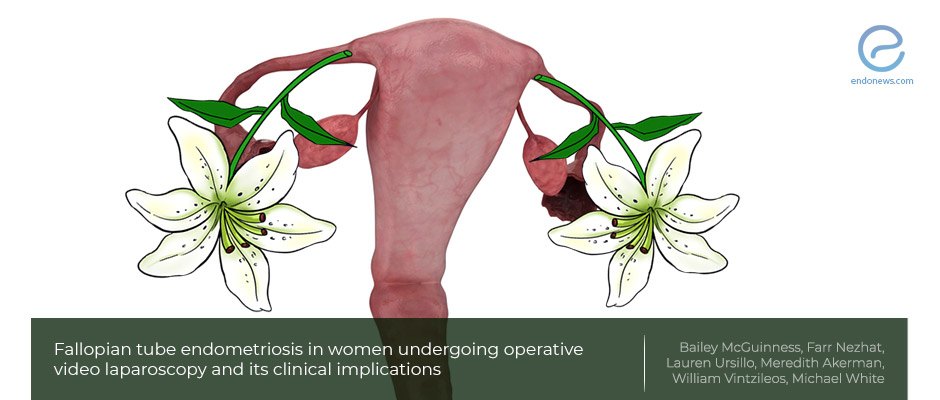Fallopian tube endometriosis
Oct 14, 2020
How often are the Fallopian tubes real victims of endometriosis?
Key Points
Highlights:
- The incidence of microscopic detection of tubal endometriosis is much higher than visual recognition.
Importance:
- The study searched for the real prevalence of tubal endometriosis aiming consciousness on its importance, referring to the possible effects on fertility treatments, pain management, and tubo-ovarian cancer.
What's done here:
- The operative records of women who had endometriosis surgery between 2015 and 2018 evaluated.
- The patients who met the study criteria (n=185) were divided into two groups, with (n=88) or without salpingectomy (n=97).
- The non-salpingectomy group was analyzed based on the macroscopic findings and the extension of the disease, while the ones who had excision had a microscopic evaluation.
Key Results:
- Out of 185 patients, 82.7 percent had a histological diagnosis of endometriosis. More than 40% of the salpingectomy and 9% of the non-salpingectomy group had the diagnosis of endometriosis.
- The patients with a histological diagnosis of tubal endometriosis were meant to have severe disease of the abdominal endometriosis.
- The overall incidence in the group who had surgery for suspicious endometriosis was found to be 35 percent while the incidence was 42.5 percent when analyzed in the histologically confirmed endometriosis group. The macroscopical diagnosis of the incidence was 9 and 11 percent, respectively.
Limitations:
- The study was conducted retrospectively and the postoperative follow-up results are lacking which limits understanding of the effectiveness of diagnosing tubal endometriosis.
- The parts of the tubes affected by endometriosis, which might highlight the mechanism for tubal endometriosis, were not evaluated in the study.
Lay Summary
Endometriosis affects various tissues including pelvic and extra-pelvic organs.
Fallopian tube endometriosis is not a widely studied topic in endometriosis, hence the real incidence is unknown as not all studies evaluate microscopically diagnosed Fallopian tube endometriosis.
In the retrospective database study conducted by McGuinness and Farr Nezhad et al, the investigators sought to find the answers for the real incidence of tubal endometriosis. They analyzed the operative data of patients who underwent surgery for suspected endometriosis, and also evaluated the results from those who histologically diagnosed tubal endometriosis.
The incidence of visually diagnosed Fallopian tube endometriosis was 11-12% compared to the 42.5% in the group with histopathologically proven tubal endometriosis.
The microscopic incidence was much higher than the known incidence in the literature. The microscopic evaluation showed tubal endometriosis in 35 percent of population and this figure went up to 42.5 percent in the patients with severe pelvic endometriosis.
The authors attract attention to the higher incidence of unrecognizable endometriosis which might be the reason for unknown infertilities, unsolved pelvic pain, and the higher risk for tubo-ovarian cancers. It was also suggested that the addition of a salpingectomy procedure to the endometriosis operations might be an issue that should be kept in mind.
Research Source: https://pubmed.ncbi.nlm.nih.gov/32826047/
tubal endometriosis infertility pain tubo-ovarian cancer incidence

